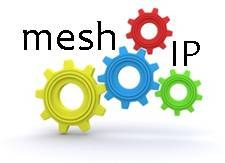 Back in April 2009, McKinsey set the cloud computing community afire with a presentation arguing that corporate cloud computing adopters might expend more money using cloud versus traditional data center resources. As reported by Steve Lohr in the NYTimes Bits blog:
Back in April 2009, McKinsey set the cloud computing community afire with a presentation arguing that corporate cloud computing adopters might expend more money using cloud versus traditional data center resources. As reported by Steve Lohr in the NYTimes Bits blog:
“The McKinsey study, “Clearing the Air on Cloud Computing,” concludes that outsourcing a typical corporate data center to a cloud service would more than double the cost.”
Many in the cloud computing space, including Gartner’s highly respected Lydia Leong, immediately took the ‘math’ behind this report to task.
My issue at the time wasn’t the math, but the premise. I couldn’t imagine any CIO – in their right mind – outsourcing their entire enterprise datacenter to the cloud.
To cloud or not to cloud, should be evaluated and employed in the context of specific business needs, accounting for fit, risk, cost, opportunity and overall value. This is no different from other technology investments.
Fast forward to late 2010, McKinsey published a couple of reports highlighting the value and role of cloud computing in flexible and responsive organizations. Different lens, different result.
In November, McKinsey published the results of their 5th business technology survey. The headline is that executives want more immediate value from IT as well as forward looking strategies that support growth and innovation.
“The demands on IT, results show, are more intense than ever. While many organizations express basic satisfaction with their own IT departments, new hurdles face IT executives as business units are demanding more value from the function. C-suite leaders are pressing IT executives for gains from transformational technologies like cloud computing, and they want IT to help turn growing stores of corporate data into information assets that support growth and guide innovation.”
Specific to cloud computing, 70% of the non-IT executives surveyed (n = 252) view cloud computing (any network delivered resource, including SaaS) as a way to increase business flexibility. These executives also see IT and business continuity value, but not to the same degree as business flexibility. I take this as a good sign. Business executives “get” the true potential of cloud computing.
In December, McKinsey published an interesting paper entitled Reshaping IT management for turbulent times, which advocates “A new model for managing IT combines factory-style productivity to keep costs down with a more nimble, innovation-focused approach to adapt to rapid change.”
“In most organizations, IT began as a support function, leading to a one-dimensional management approach. However, technology-enabled products, interactive communications, and an “always on” information environment have thrust IT to the forefront, with critical implications for business growth and customer engagement. In addition, established practices, such as lean-management techniques, have highlighted the value of IT in reducing waste and increasing productivity.
This deeper recognition of IT’s potential has given rise to a new management model consisting of two categories: “Factory IT” and “Enabling IT.” Factory IT encompasses the bulk of an organization’s IT activities, applying lessons from the production floor—scale, standardization, and simplification—to drive efficiency, optimize delivery, and lower unit costs. Enabling IT is focused on helping organizations respond more effectively to changing business needs and gain a competitive advantage by spurring innovation and growth.”
According to the report, there are 3 key components of the Factory Model:
1. Industrial IT – applying traditional business-management techniques to IT (such as Lean, disciplined governance, performance measurement, transparency)
2. Flexible IT factories – building IT that’s more responsive to changing business conditions, utilizing the cloud and agile development techniques:
“The cloud. Cloud computing offers access to information, processing, and storage through the network or an external service provider. This mode of delivery allows companies to purchase computer processing as a service, rather than making up-front investments in IT capacity and in-house support staff. The New York Times, for example, digitized and catalogued more than 100 years of archived articles for its Web site in a 24-hour period by using Amazon.com’s cloud offering, avoiding the need to configure and operate a set of servers for a onetime effort.
…Together, the cloud and agility can make the IT factory more nimble, with lower costs and faster delivery.”
3. Holistic business cases – cutting complexity through improved planning (complexity builds over time, result of systems evolving beyond initial intent)
While not stated in the report, I believe cloud computing supports the Rapid Experimentation component of the Enabling IT Model:
“Where lean manufacturing and Factory IT seek to avoid errors, Enabling IT’s mind-set tolerates (and even encourages) the mistakes that result from experimentation and iteration as long as they happen quickly, the outcomes are measured, and the lessons are incorporated into the team’s thinking. More companies are embracing rapid experimentation as a way to develop, refine, and upgrade their services or products.
Capital One and Google, for example, have been at the forefront of this trend with their credit cards and online services, respectively. That wave is spreading to traditional players: P&G’s Vocalpoint, a network of mothers, provides feedback on new product ideas. Similarly, a leading fast-food company is using IT systems and analytics at test sites to gauge the impact of new menu choices on store-level revenue, operations, and customer experience.
Such experimentation requires the right set of technical capabilities and a flexible IT environment. Managers must employ tools to define, build, test, and improve new products quickly, integrating feedback from both internal stakeholders and a set of users or customers.
Responsive IT support is a vital component of this effort. By assembling a team to work hand in hand with the managers on these new business offerings, IT provides essential support to help build and modify business processes and systems rapidly.”
Changing their lens from IT expense to business value, McKinsey has identified several (viable) value propositions for cloud computing. Switch your own lens. What do you see?
- The Customer Edge Drives the Need for NaaS - June 25, 2023
- Blockchain Evolves And Secures - January 13, 2019
- Bessemer Ventures’ 2018 Cloud Computing Trends - February 25, 2018




